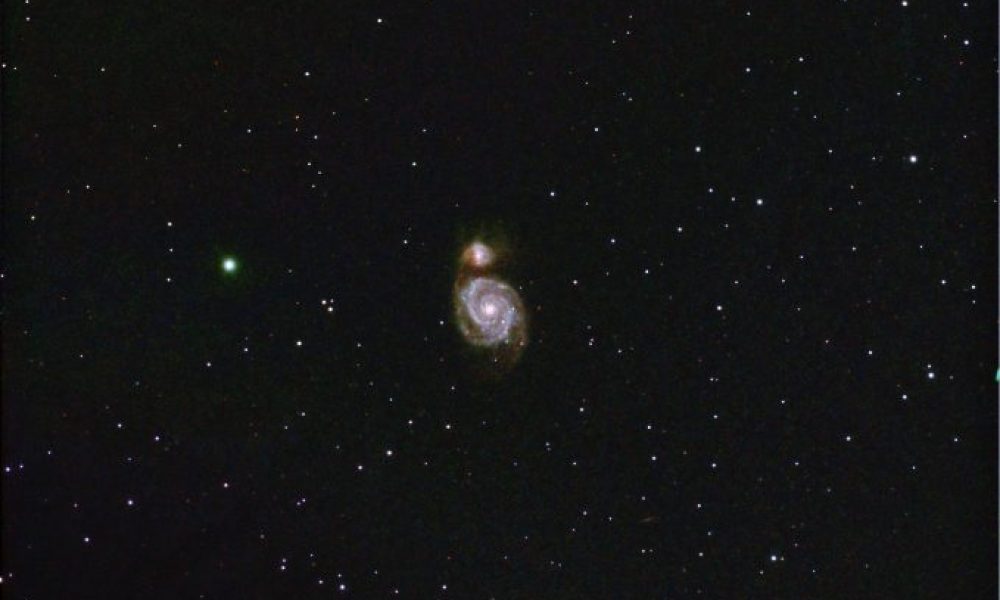Galaxies under the Big Dipper’s Handle
Dear Friend,
Due to the coronavirus restrictions, I have not been able to do much astrophotography, so I have not sent out a Lookout Observatory email for over 5 months. I have been entertaining myself at home by practicing my processing skills on old pictures, and I realized I could share some older photos that didn’t seem good enough to send out before, but look better reprocessed with newly acquired skills. So here are pictures of two galaxies that I took between 2 and 9 years ago.
Image 1: So you can know where these galaxies are located in the sky, the first picture is of a 25° x 35° rectangular area of the sky around the Big Dipper, with green lines to help you see the star pattern. The small blue rectangle below the end of the Dipper’s handle is the area of sky in the next picture. And 5° below that, at the location of the blue X,is the location of the very last picture.
Image 2: This small (about 1½° x 2°) area of the sky has at its very center one of the most famous galaxies in the sky – the Whirlpool galaxy, or M51. This object was first observed by Charles Messier (hence the “M” in M51) in 1773. He called it a nebula because in his telescope it just looked like a small fuzzy spot. It was about another 70 years until telescopes improved enough that the spiral structure could be observed. And it was almost another 70 years until it became known that spiral structures like this were not gaseous nebulae in our galaxy, but entire galaxies themselves millions of light years outside of our Milky Way galaxy. This one is relatively close at about 25 million light years. But part of what makes M51 so interesting is what looks like a bright lump at the end of one of the spiral arms. It has its own designation as NGC 5195, and it is actually a separate galaxy.
Image 3: The third picture is a much closer view of M51 and NGC 5195, an irregular galaxy. Sometimes two galaxies that appear close are really very far apart, but by chance lie along the same line of sight. In other cases they are actually very close, and they interact. That is the case here, and the smaller galaxy is clearly distorting a spiral arm from M51. In fact, it is believed that tidal forces from the smaller galaxy have strongly enhanced the spiral structure of M51. Because dust from M51’s distorted arm looks to be covering the left half of NGC 5195, it is believed that the smaller galaxy is slightly behind M51. Interactions between these two galaxies are partly responsible for the many areas of active star formation in hydrogen gas and dust exhibited in the reddish areas. The blue areas are where young hot stars have already formed, and the yellowish areas (near the centers of each galaxy) contain older stars.
Image 4: This is the spiral galaxy M63, believed to be gravitationally connected to M51, even though they are several million light years apart. Because M63 doesn’t have large-scale continuous spirals, but rather many more loosely wound, discontinuous arms, it is called a flocculent spiral galaxy. It is nicknamed the Sunflower galaxy. This image is at the same scale as the previous one, so you can see that M63 is about the same apparent size as M51 and NGC 5195 taken together. Since they are approximately the same distance from our Milky Way, they are roughly the same actual size. But their appearance is quite different, just three of the many varieties of galaxies scattered across our universe.
However difficult the times may be, keep looking up,
Carter, (sometime) Resident Astronomer,
Lookout Observatory



